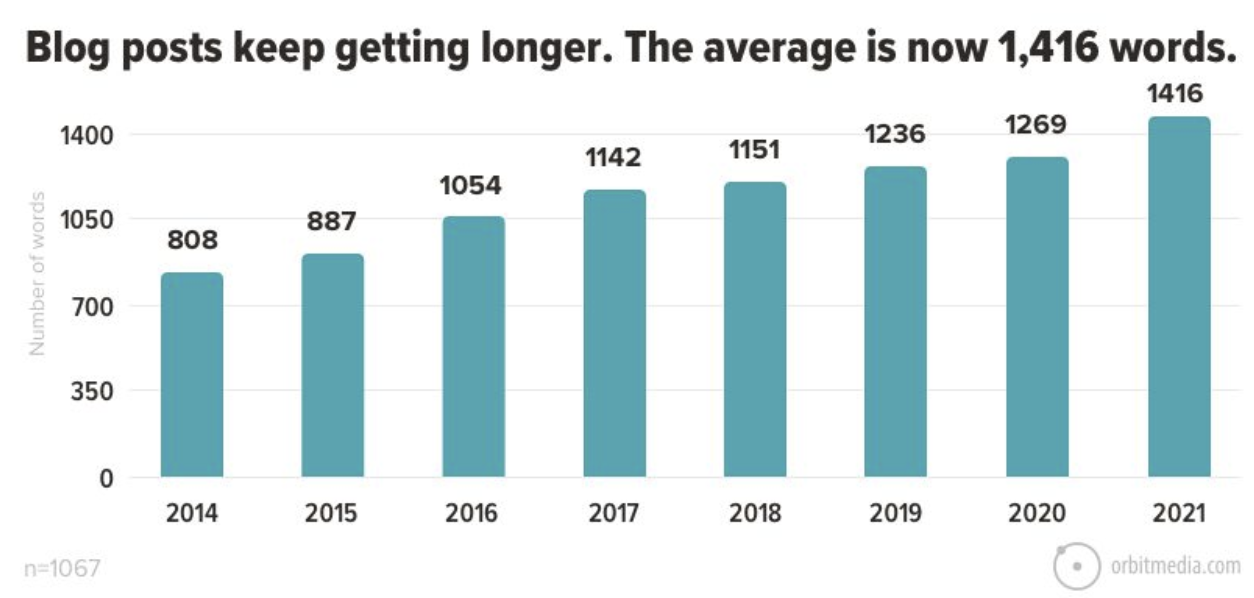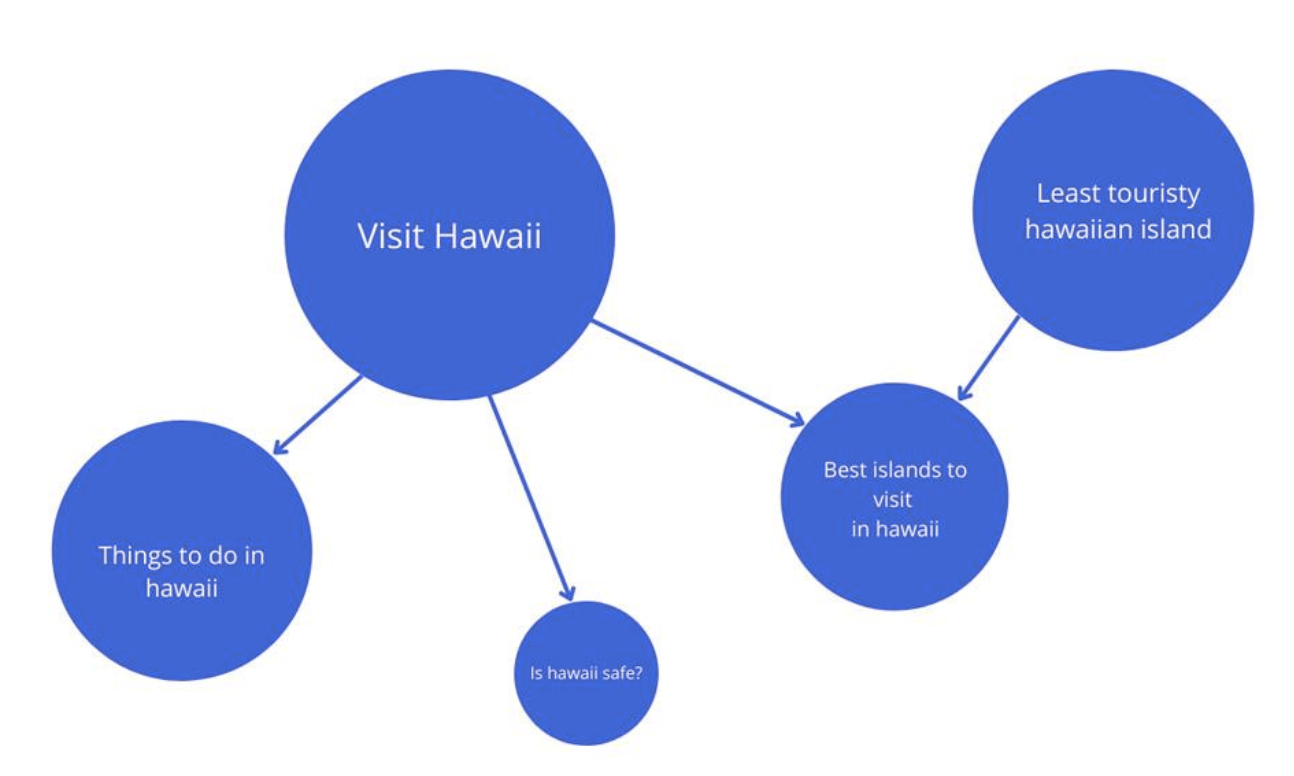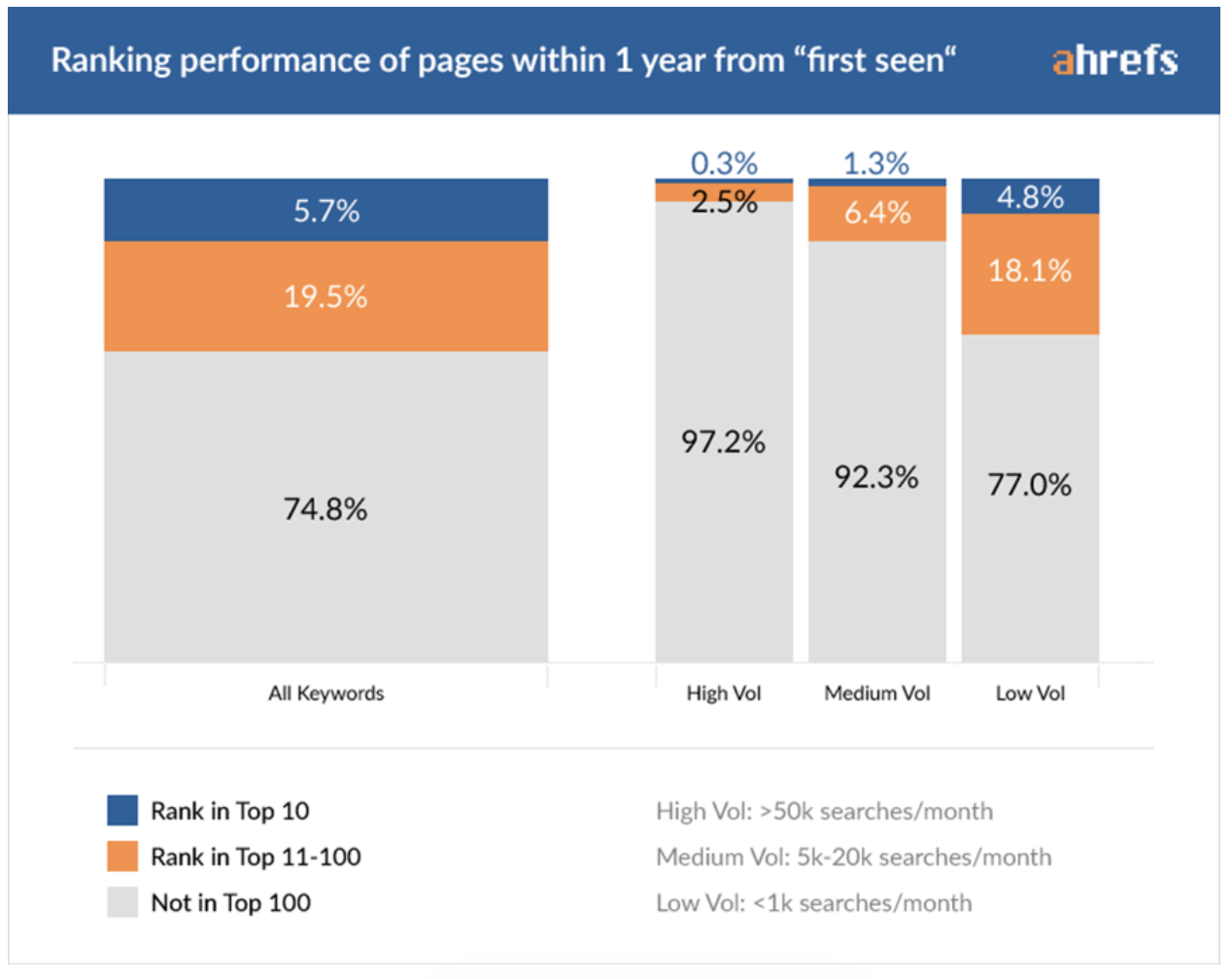There’s no denying it: blog posts are getting longer.
In fact, research shows that the average blog post length increased by an astonishing 75% from 2014-2021.

Of course, just because everyone else is writing ever-longer posts, that doesn’t mean you should be too. Longer doesn’t necessarily mean “better.”
Which brings us to the eternal “long form vs short form content” debate.
Where does short-form content end and long-form content begin?
And how do you choose which to use in certain scenarios?
Let’s find out…
Defining Long-Form vs Short-Form Content
As with a lot of things in the world of digital marketing, there’s no consensus around what counts as “long-form content.”
Here are a few definitions:
- HubSpot: “Long-form content describes a piece of writing that is between 1,000-7,500 words.”
- Core dna: “Any content piece longer than 4,000 words in length can be called long-form content.”
- SEMrush: “Long-form content is typically more than 1,200 (sometimes 1,000) words.”
That’s a pretty wide range of opinions. So which is correct?
We’re not saying any of them are wrong, per se, but from a blog writing perspective, we define long-form content as anything longer than 1,000 words.
To be clear, we’re specifically talking about long-form blog content here. A whitepaper, an in-depth report about a specific topic that is usually available for audiences to download, tends to be longer.
Meanwhile, we define short-form content as closer to 500 words.
This doesn’t just include blog posts; it could also encompass things like Facebook, LinkedIn, and Twitter posts.
Choosing the Right Content Length & Format: 3 Scenarios
Knowing the difference between long form and short form content is step one. But to truly be effective with your content marketing, you need to know when to deploy which type of content.
Let’s look at the following scenarios to see when long form vs short form content would be most appropriate.
Scenario #1: Choosing Between a Long-Form Blog or a Whitepaper
We’ve already noted that whitepapers tend to be pretty long, with most sources agreeing that they’re at least 2,500 words in length (and often much longer).
However, some blog posts can be just as long. So which should you use?
In this case, it depends on the goal of your campaign.
Whitepapers are typically a downloadable asset. That makes them perfect for lead generation-oriented campaigns, in which you’re looking to exchange a piece of content for a prospect’s name and email address (and possibly a bunch of other information).
HubSpot’s annual State of Marketing reports are a classic example:
The content is packaged as a PDF (or similar format) and hidden behind a lead capture form with a dedicated landing page.
If you want to access all the juicy insights within, you’ve got no choice but to answer HubSpot’s questions first.
As such, there’s a clear shortfall to this approach: it has limited SEO value.
If using a content-blocking gate, the asset itself isn’t indexable. Otherwise people could find it on their own, bypassing the download form.
So if your goal is to rank on the first page of Google for an in-depth topic, you should definitely choose a long-form blog post that can be optimized for SEO over a whitepaper.
That’s what HubSpot does with its ultimate guide to inbound lead generation, which clocks in at well over 5,000 words long.
Key takeaway: If you have a comprehensive piece of content, the best form depends on your campaign goals. Looking to capture leads? Create a downloadable whitepaper only accessed by signing up for the mailing list. Looking to be #1 on Google? Create an SEO-friendly long form blog post.
Scenario #2: Answering Highly Specific Questions
Ever Googled a recipe, clicked on a search result, then found yourself reading 2,000 words about how cooking mushrooms always reminds the author of their childhood holiday to Italy?
Sometimes, that sort of rambling, conversational approach is exactly what your audience is looking for — it can be a pleasant distraction and help connect readers with the author.
But often, people want to find the information they’re searching for as quickly as possible.
They’ll scroll straight past all that preamble and head to the most relevant-looking subheading or bullet point list.
It’s your job to make life as easy for your audience as possible. Because if you helped them answer their question, there’s a good chance they’ll remember you (and come back to you in the future).
So if you’re trying to answer a highly specific question, short-form content is the way to go.
For instance, the City of New York Department of Planning ranks on page one for the term “New York population” with a 300 word brief summary of US Census data, breaking down the numbers for each borough and looking at growth rates.
Meanwhile, Statista goes even shorter, simply answering the question by adding a chart and a couple supporting sentences:
In this scenario, adding another 1,000+ words to the page wouldn’t make for a “better” piece of content — it’d make the information harder to find.
Key Takeaway: Longer isn’t always better. If your reader’s question can be answered in just a few sentences, that’s all your piece of short form content needs.
Scenario #3: Maximizing Results When You’re New to SEO
You may have heard about the hub-and-spoke content model.
In a nutshell, it’s about combining:
- Long-form “hub” content targeting a competitive (and often high-volume) keyword with
- Short-form “spoke” content targeting less-competitive, long-tail keywords related to the “hub” keyword
For example:
The idea is that all those “spoke” articles will pass authority to the “hub” content, thereby helping you rank for a high-competition term.
But there’s a problem: if you’re new to SEO, or haven’t invested in it at all, hub and spoke content marketing often isn’t the answer.
Or at least, it’s not the answer right now.
It’ll likely take you a ton of time to get anywhere near page one for your desired “hub” keyword — especially if you’re in a niche with lots of brands that have already invested heavily in SEO.
In that case, a better use of your marketing budget would be to start creating lots of short-form, “spoke” content.
It doesn’t necessarily have to be sub-500 words, but try to keep it beneath 1,000 words for efficiency purposes.
Why do we recommend this approach?
Because almost 95% of content doesn’t make it to page one within a year of first being spotted by Google.
If only a tiny proportion of your blogs are ever going to generate any search traffic, it can make sense to throw as many darts at the board as possible and see what sticks, rather than focusing on one long piece of hub content that may never rank.
When a post starts building momentum, that’s the time to expand it into a piece of long-form blog content.
Key takeaway: If you’re new to SEO and blogging, generate as much short form content (sub 1000 words) as you can. Once you find a topic that resonates with your readers, expand into long form content for that niche.
When it comes to long form vs short form content, there’s no clear winner. But one thing is clear: Whether long-form or short, writing high-quality content is hard.
Get in touch with Content Conquered today to see how we can help you create better content to support your marketing objectives.




